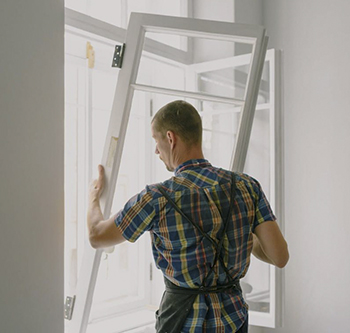Decrement delay
The term ‘decrement delay’ refers to the time it takes for heat to pass through an element of a building (such as an external wall or roof). Typically this is taken to be the delay in hours between the peak temperature of the outer surface of the element on a summer day and the resulting peak temperature of the internal surface.
This concept reflects increasing awareness that the thermal behaviour of buildings is dynamic, rather than static, and that thermal mass, as well as thermal insulation, has a significant impact on the energy efficiency of a building. For example, two buildings with identical U-values may perform very differently depending on their decrement delay, with a longer delay likely to reduce peak loads on building services systems.
Materials with a low lambda value (sometimes referred to as thermal conductivity or k-value), high specific heat capacity and high density will tend to have a high decrement delay.
The term ‘decrement factor’ refers to the amount by which conditions are moderated by an element of a building. So in the case of the peak temperature on the outer surface of a building on a summer day, this would be the amount by which the peak is reduced by the time it reaches the inner surface. It is expressed as the ratio between the internal surface cyclic temperature variation compared to the external surface.
To reduce summer overheating, a low decrement factor is required, and a decrement delay of 6 to 12 hours.
[edit] Related articles on Designing Buildings Wiki
Featured articles and news
Skills gap and investment returns on apprenticeships
ECA welcomes new reports from JTL Training and The Electrotechnical Skills Partnership.
Committee report criticises UK retrofit schemes
CIOB responds to UK’s Energy Security and Net Zero Committee report.
Design and construction industry podcasts
Professional development, practice, the pandemic, platforms and podcasts. Have we missed anything?
C20 Society; Buildings at Risk List 2025
10 more buildings published with updates on the past decade of buildings featured.
Boiler Upgrade Scheme and certifications consultation
Summary of government consultation, closing 11 June 2025.
Deputy editor of AT, Tim Fraser, discusses the newly formed society with its current chair, Chris Halligan MCIAT.
Barratt Lo-E passivhaus standard homes planned enmasse
With an initial 728 Lo-E homes across two sites and many more planned for the future.
Government urged to uphold Warm Homes commitment
ECA and industry bodies write to Government concerning its 13.2 billion Warm Homes manifesto commitment.
From project managers to rising stars, sustainability pioneers and more.
Places of Worship in Britain and Ireland, 1929-1990. Book review.
The emancipation of women in art.
Call for independent National Grenfell oversight mechanism
MHCLG share findings of Building Safety Inquiry in letter to Secretary of State and Minister for Building Safety.
The Architectural Technology Awards
AT Awards now open for this the sixth decade of CIAT.
50th Golden anniversary ECA Edmundson awards
Deadline for submissions Friday 30 May 2025.
The benefits of precast, off-site foundation systems
Top ten benefits of this notable innovation.
Encouraging individuals to take action saving water at home, work, and in their communities.
Takes a community to support mental health and wellbeing
The why of becoming a Mental Health Instructor explained.























